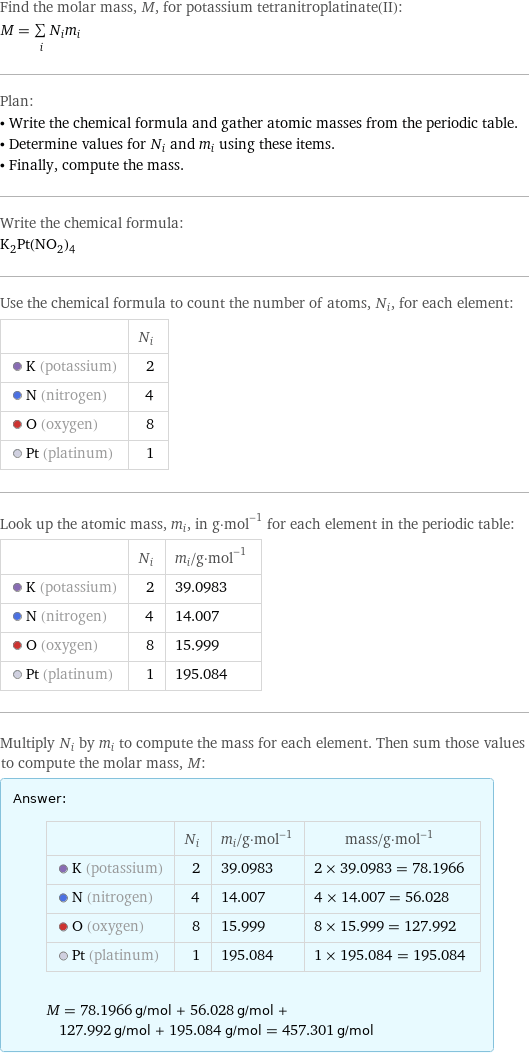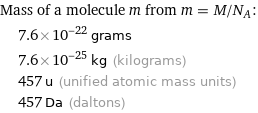Input interpretation

potassium tetranitroplatinate(II) | molar mass
Result

Find the molar mass, M, for potassium tetranitroplatinate(II): M = sum _iN_im_i Plan: • Write the chemical formula and gather atomic masses from the periodic table. • Determine values for N_i and m_i using these items. • Finally, compute the mass. Write the chemical formula: K_2Pt(NO_2)_4 Use the chemical formula to count the number of atoms, N_i, for each element: | N_i K (potassium) | 2 N (nitrogen) | 4 O (oxygen) | 8 Pt (platinum) | 1 Look up the atomic mass, m_i, in g·mol^(-1) for each element in the periodic table: | N_i | m_i/g·mol^(-1) K (potassium) | 2 | 39.0983 N (nitrogen) | 4 | 14.007 O (oxygen) | 8 | 15.999 Pt (platinum) | 1 | 195.084 Multiply N_i by m_i to compute the mass for each element. Then sum those values to compute the molar mass, M: Answer: | | | N_i | m_i/g·mol^(-1) | mass/g·mol^(-1) K (potassium) | 2 | 39.0983 | 2 × 39.0983 = 78.1966 N (nitrogen) | 4 | 14.007 | 4 × 14.007 = 56.028 O (oxygen) | 8 | 15.999 | 8 × 15.999 = 127.992 Pt (platinum) | 1 | 195.084 | 1 × 195.084 = 195.084 M = 78.1966 g/mol + 56.028 g/mol + 127.992 g/mol + 195.084 g/mol = 457.301 g/mol
Unit conversion

0.4573 kg/mol (kilograms per mole)
Comparisons

≈ 0.63 × molar mass of fullerene ( ≈ 721 g/mol )

≈ 2.4 × molar mass of caffeine ( ≈ 194 g/mol )

≈ 7.8 × molar mass of sodium chloride ( ≈ 58 g/mol )
Corresponding quantities

Mass of a molecule m from m = M/N_A: | 7.6×10^-22 grams | 7.6×10^-25 kg (kilograms) | 457 u (unified atomic mass units) | 457 Da (daltons)

Relative molecular mass M_r from M_r = M_u/M: | 457